Creating a SaaS growth strategy isn’t easy. For one, the SaaS market is a crowded and competitive space. In 2024, it’s projected to grow into a 232 billion market, tripling where it was almost ten years ago in 2015 when the entire market amounted to just $69 million.
While competition in an industry can often be a good thing, SaaS marketing strategies have their own nuance as well. The business model of a SaaS company dictates that an effective growth marketing strategy needs to follow a separate set of rules and best practices as well.
For starters, selling a digital product like software means your product isn’t a physical, tangible item. While this is fine by itself, a SaaS company must convince its users to make their product an indispensable part of their business growth and daily routine – a pretty tough sell compared to convincing a target customer to buy a new t-shirt.
Secondly, the t-shirt retailer only really needs to convince you to buy once, compared to the SaaS industry, which makes its money off ongoing subscriptions to drive monthly recurring revenue. The t-shirt vendor doesn’t need to worry about churn rate the way a SaaS business does. So, while customer acquisition is always a high priority for any growth strategy, monetization, and customer retention are equally big levers (if not even bigger) for SaaS companies.
But fear not. At NoGood, we’ve grown multiple SaaS brands ourselves via inbound marketing and studied countless others to define the essential, tried and true SaaS growth strategies that you can start utilizing today.
Looking for a SaaS marketing agency to drive growth?
Our top 5 SaaS growth marketing strategies for 2024
1. Provide utility and demonstrate authority – Content marketing efforts
2. Let people try the product for free
3. Leverage your customers to help spread the word – Referral marketing
4. Social proof & high intent audiences – Software review sites
5. Go where your customers are – Social media strategy
1. Provide utility and demonstrate authority – Content marketing efforts
While content marketing is a tactic that businesses can utilize across many markets, it’s practically a necessity for a B2B SaaS company, and for a good reason. When people are searching for something online, it’s often due to a pain point they’re looking for a solution to. If your software can help solve that problem, you’re capturing not just traffic but high-intent traffic.
Answer questions – This the first and most obvious use of content marketing for SaaS, but it bears repeating because of how essential it is. Look at any SaaS startup, and they likely have blog content, which serves to help draw in potential buys, as well as establish the company as a thought leader in their space. Consider the pain points of your target audience. What problems do they have, and how does your software help solve that? Address these questions with SEO-optimized content, and you’re helping your most qualified leads, as well as seamlessly transitioning them into your sales funnel.
For example, a search for “how to create an invoice” will yield many payroll software companies in the PPC results, but SquareUp offers a simple content piece that answers that very question.

These types of content offer multiple solutions for someone who might be looking for just a quick answer or solution but also outline how easy it is to create invoices with SquareUp, offering a step-by-step guide with links to begin the onboarding process.
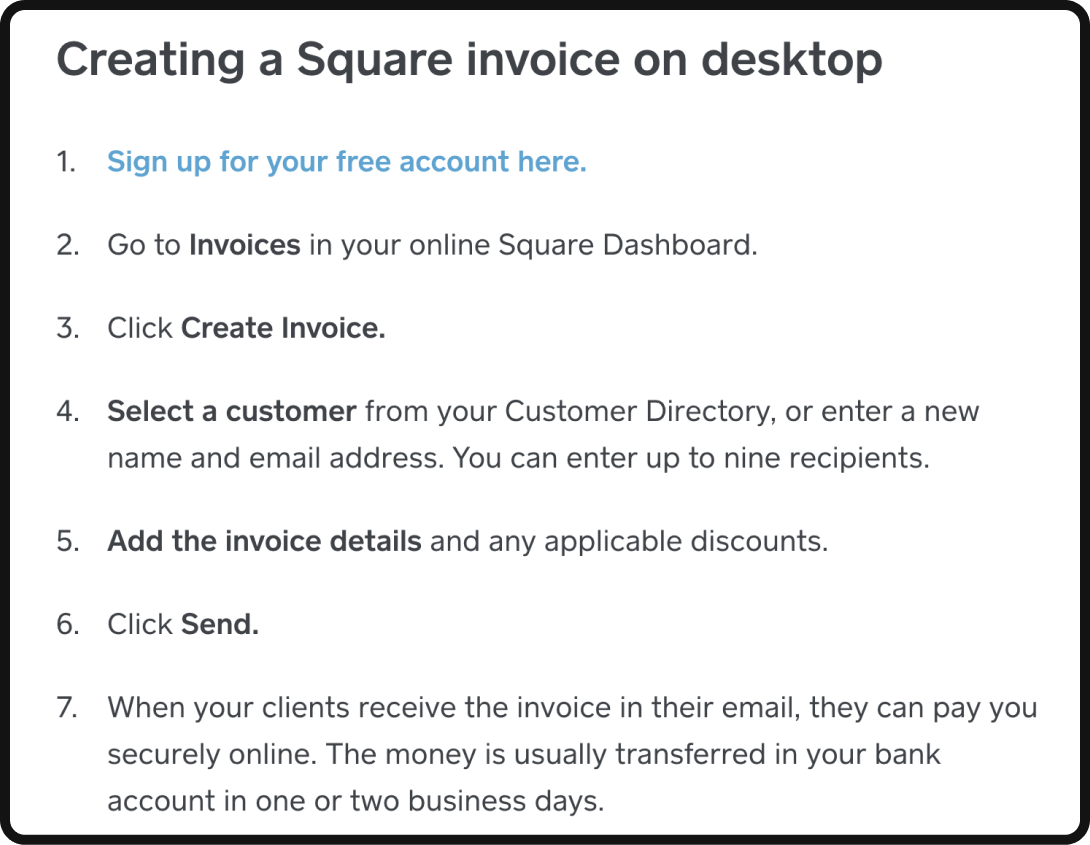
Conquesting content – As we’ve mentioned, the SaaS market is crowded, where many products boast similar features and use cases. Users know this and know that if their current software isn’t meeting their needs, there’s likely something out there that will. A popular and effective tactic to capitalize on this is to create high-quality content for (and rank for) searches for alternatives to your competitors. This is exceptionally high intent and can be tailor-made to this target audience.
For example, say you were utilizing Asana for your team organization and project management, but for whatever reason, it just wasn’t working for your company, and you were in the market for an alternative. The top search result for “Alternatives to Asana” is from Hive, a direct competitor in the project management space. Hive is well aware of the marketing and knows they can fill a need for someone looking to move on from Asana, so they’ve created a landing page specifically for that purpose.

This content strategy also works as an SEM tactic. Below are the top AdWords results for the same search, and as you can see, ClickUp and Scoro developed content specifically for people with this exact high-intent search.
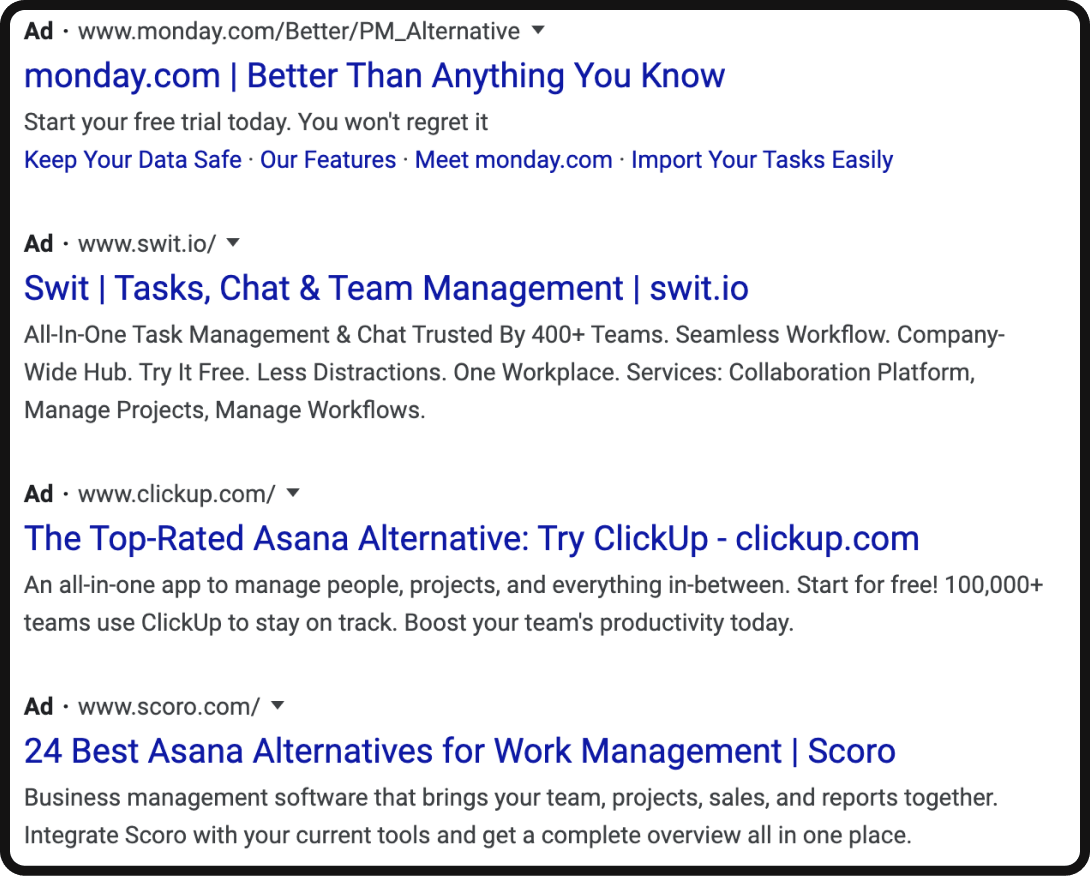
Feature marketing – The early days of SaaS were mostly niche products that could solve one problem really well. Are you overwhelmed with email and want to streamline communication better? Try Slack. Want to take better notes during calls and meetings? Here’s Evernote. However, the growth of the SaaS market has led to an explosion of product development, where new features are continually being added to fill consumers’ needs. Feature marketing stands out as a solution because it presents opportunities to drive revenue through all touchpoints of the SaaS marketing funnel.
- Acquisition – having a more robust product is undoubtedly beneficial in bringing in new customers and driving down acquisition costs. Not only do you look better among your competitors, but adding features opens up new opportunities within content marketing and SEO strategy.
- Activation – as we’ll touch upon in the next section, the SaaS business model leans heavily on getting users into the funnel via free trials or free versions of your products. Adding premium features makes it more enticing for a user to upgrade their account from free to paid.
- Retention – feature marketing can be utilized either offensively or defensively, but in either case, its primary objective is to keep your paying customers happy. From an offensive standpoint, features can be added as a result of customer surveys and buyer persona research, having a deep understanding of your customer’s pain points, and how to fix them. From a defensive standpoint, it’s about filling in gaps where your competitors might attempt to steal loyal customers and market share because they have an offering that you don’t.
2. Let people try the product for free
Similar to content marketing, free trials weren’t invented as a SaaS growth strategy, but they’ve basically become an essential tactic for any SaaS product’s go-to-market strategy. Free trials work for SaaS for two primary reasons. First, since the product is a digital offering, offering a trial of it doesn’t cost much, if anything, to physically make. Second, onboarding a new SaaS software for an organization can be a big ask.
Many products will require a revamp of internal processes, training on how to use it, and a cost per user per month. That’s a tough sell to make as it is, let alone if the future users or businesses don’t even know what it’s like to try and use the product. Thus, the free offering is practically required in the SaaS space and is a proven tactic in driving down customer acquisition costs. It can be a little complicated to choose how to structure your free offer, but here are the primary strategies for user onboarding.
Freemium users – The freemium offers a version of the software that is entirely free but doesn’t include everything that the software can offer. Within freemium, offers typically fall into “limited feature” versions or “limited capacity.”
“Limited feature” models offer the basic features of the product, but the user or team will need to upgrade to the paid version to access everything. This model’s benefit is that the free models themselves can still be beneficial to an organization, meaning they’ll be kept in the sales funnel longer, giving you ample opportunity to upsell with new features. The downside is that users may often stay in this free model forever, and while there might not be a production cost associated with a digital product, their use can still eat up bandwidth.
Grammarly is an excellent example of this strategy. Their web app and Chrome plugin work essentially as an advanced spell and grammar checker on everything you type on the web. Their free model is available for anyone to download, but it will only help you so much. For their full suite of features, you’ll need to upgrade to their Premium plan.
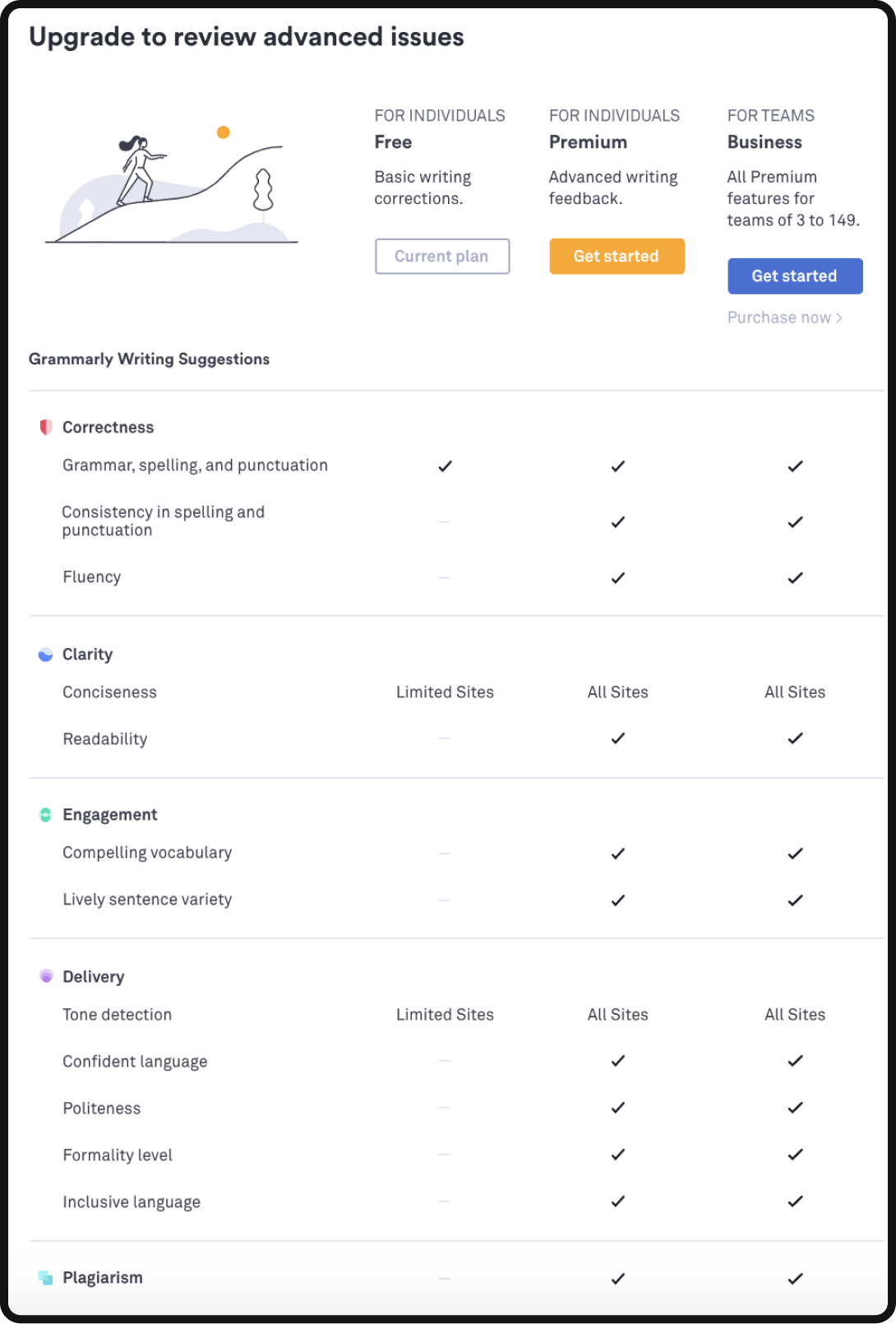
“Limited capacity” models get users into the funnel with a free version as well, but their restriction is in the number of things a user can do with the product. The most common limits are the number of trial users within a platform, storage space capacity, or the number of times a specific action can be done.
The benefit here is that if your product has proven its worth before the user or team reaches the capacity limit, the upsell opportunity is much more seamless. The downside is the other end of the spectrum, where the product hasn’t proven value yet, which means it will be quickly discarded in favor of a new solution. There’s definitely a balance in where exactly to start to limit use, which often requires a fair amount of testing to get right.
Slack is a perfect example of this. Their free offering allows anyone to create an account and start communicating with their team. However, there are cut-offs on both the number of messages that can stay within your archive, as well as the amount of file storage. This limits Slack’s costs on their free members while still letting users experience the app to see if they want to continue using it.
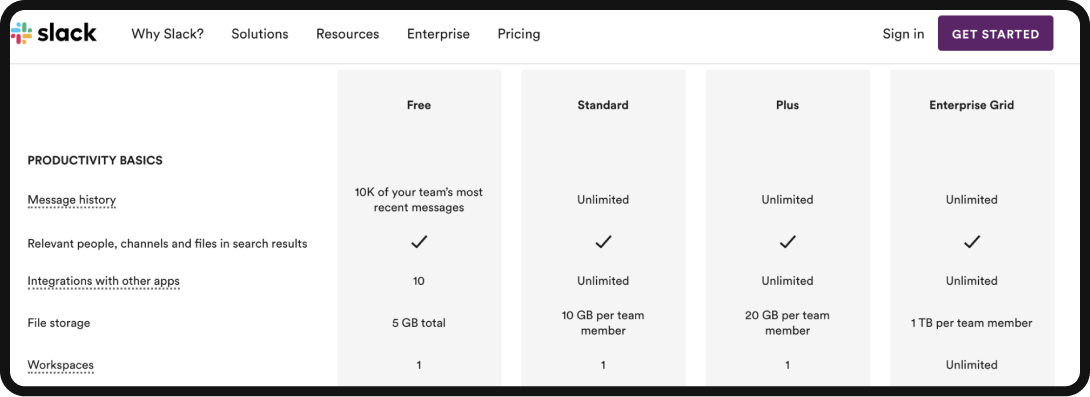
Free trials – The alternative to a freemium offering is the free trial, where users are given access to the full product with all the bells and whistles, but only for a limited time. Once that trial period is over, users or teams will be required to pay to continue using the software. There are two ways that SaaS companies can structure their free trial offers – “opt-in” or “opt-out.”
The opt-in model requires no payment information upfront. After users reach the end of their trial, their service is cut off unless they input payment information to continue their subscription. This strategy is likely to get more people to try out the service upfront, as they know there’s no risk of getting charged yet, but it will require an extra step to get them to become paid customers.
Basecamp is an excellent example of this pricing strategy. Their pricing starts at $99/month, but they’ll offer you a free month of the complete tool for 30 days so you can test it out to see if it’s a fit. If it works for your team, they’ll prompt you to input payment info to continue using it. If not, you won’t automatically be charged, and Basecamp doesn’t need to continue providing bandwidth and support for a non-paying current customer.
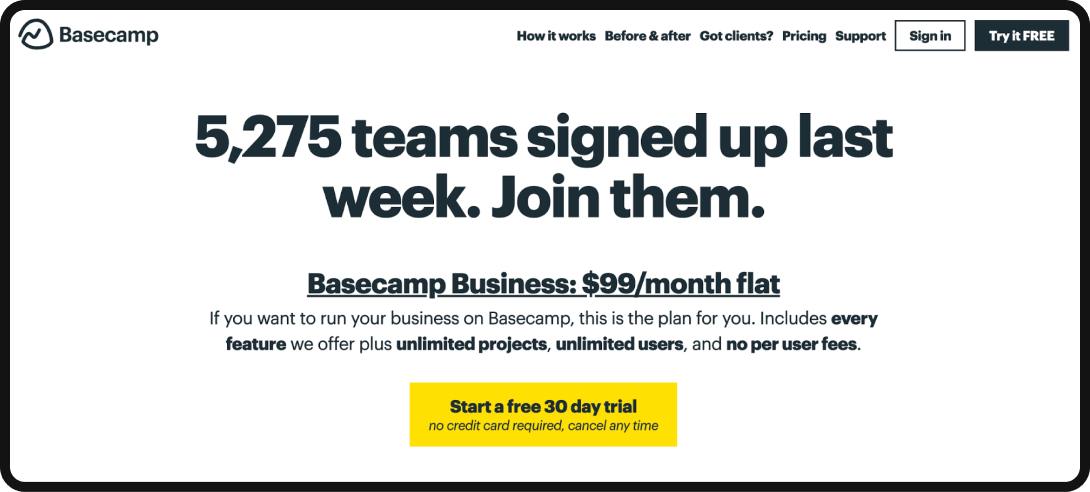
The opt-out trial is the opposite, where the user must input payment info to access the free trial. Once that period ends, they’re automatically rolled into the paid subscription unless they opt out in advance. While this strategy will likely result in more “conversions” from free members to paid subscribers, many of them result from a person forgetting to opt-out. This sales strategy can lead to a bad customer experience, where users feel like they’ve been “tricked” into paying, leading to more cancellations and potentially harmful reviews.
3. Leverage your customers to help spread the word – Referral marketing
One of the more classic examples in growth hacking history is how Dropbox was able to gamify their users to refer their friends, driving incredible growth, increasing their user base by 3900% in just 15 months. While referral marketing is no longer a silver bullet, it remains a strong tactic that all SaaS companies should be taking advantage of.
People tend to value their friends’ recommendations highly (certainly more highly than any advertisement), and it’s tough to find a more streamlined and efficient CAC. The best practices for referral marketing are pretty straightforward. Make it as easy as possible for the users to refer their friends, offer a valuable and relevant incentive, and reward both sides.
One example of a company taking advantage of this is Gusto. A simple tab within the Gusto interface will take you to a referral page. The offer is clear ($200 Amazon gift cards for both you and your friend), and they have seamless instructions for how to refer someone – sharing a link, posting to social media, or inviting via email campaigns – leaving it up to the user to decide what’s most comfortable for them.

Gusto took their referral program even further. By knowing their customers and knowing the time of the year they’re likely looking for a new payroll solution, they upped their offer for a short time only to $400, highly incentivizing their own customers to help promote Gusto over their SaaS alternatives at their most competitive time of the year!
4. Social proof & high intent audiences – Software review sites
While a personal recommendation might be the most powerful, social proof from thousands of other satisfied customers is pretty strong as well. These communities capture real reviews and ratings from users, allowing prospects to compare various software and tools before making an informed decision. The best part is that getting your brand in front of this super high-intent audience is not only (mostly) free, but these listings also give your site a do-follow link, which helps boost overall SaaS SEO.
- Garter CPC (Capterra, GetApp) – The network of Garter sites, particularly Capterra, is an essential place for any growing SaaS company. This can make categories a bit crowded on-site, but to combat this, they offer CPC ads across Capterra and GetApp as a way to rise to the top of the category rankings. While these clicks can be costly, particularly compared to an AdWords campaign, it’s tougher to find a more qualified click than someone who went to a software review site and is actively looking for a software solution. Garter can also help generate reviews for your listings, offering users various incentives to complete one, and is paid for by Garter!
- Software Advice – Software Advice is also under the umbrella of Garter software review sites. However, instead of pricing their lead generation products on a cost per click, brands are instead paying on a cost per lead. For each of your brand’s products, you pre-set your qualifications on prospect size (Revenue, Number of Employees, Number of Users), industries, and application use. From there, as leads come in, a rep from Software Advice will pre-qualify the lead, and if they fit your qualifications and you’re one of the top bidders, your product will be recommended to the prospect, and their contact info will get passed to the brand. While these are, of course, going to be more expensive than a cost per click, you don’t need to worry about the post-click conversion or if the lead is qualified – they’re essentially already a marketing-qualified lead (MQL)!
- G2 Crowd – G2 Crowd stands out with their reviews, which are seen as a bit more genuine, as the review writers need to be verified via their LinkedIn profiles. G2 also offers services to help generate reviews for your company, as well as help your brand stand out amongst your competitors. G2 differs because rather than offering premium placement or cost-per-click ads, their highest value comes from sharing data on the companies who are potentially interested in your product. With their high intent traffic on “best software” and “alternatives to” pages, they can share this info with brands, where it’s up to their outbound sales team to reach out. This data can also be leveraged on platforms like LinkedIn, where ad campaigns can be set up to target employees of the in-market companies specifically.
- Trustpilot – Unlike the other review sites here, Trustpilot doesn’t specialize purely in SaaS, showcasing online reviews for all kinds of websites and products. However, they’re worth mentioning here because they not only rank well for Alexa, but they’re also a Google Trusted Seller partner, meaning with enough reviews your rating can potentially show on Google SERP.
The critical thing to note is that success on these sites can be very contingent on generating high-quality reviews. While any brand can pay for placement, the social proof of happy customer reviews will carry far more value and drive much more customer success. This is why many of these companies help prompt reviews – more reviews equal more success, which equals more long-term partnerships.
While these sites’ incentivized reviews can help get things started, brands should still do everything they can to generate even more. Don’t be afraid to ask your most satisfied customers for customer feedback by leaving a direct review. If you decide to focus on one specific site, many brands have also seen success in adding a “Review Us” link to their email marketing signature.
5. Go where your customers are – Social media strategy
While social media is a no-brainer for a B2C brand, your SaaS marketing strategy can and should be leveraging the platforms as well. For one, you know for a fact that your customers are on social media because, well, everyone is! Knowing that, social media can be a great place to collect direct feedback via comments or DMs, as well as collect valuable data on your users.
Retargeting – The first and perhaps most obvious tactic is retargeting. The standard rule of thumb in marketing is that it requires about eight media touches to close a sale, but as we’ve discussed, given the level of investment and potential deal size, the SaaS business cycle can take much longer. Retargeting is a simple way to stay on the top of a prospect’s mind and continue to offer value, such as ebook/white paper downloads or invites to upcoming webinars.
If you’re employing a content marketing strategy, these social ads can be a great place to re-purpose existing content. Particularly on platforms like Facebook or Twitter, they can also be an excellent opportunity to communicate directly with potential customers. This type of one-on-one communication is invaluable. First, a good marketer will be able to draw insights from these to improve click-through rates and conversion rates across all campaigns. But more importantly, their questions and comments can help you identify pain points and the way they talk about them, and can even help prompt new ideas and product features.
Influencer marketing – Another tactic that seems at first glance to be more for B2C, SaaS companies have seen success with it as well. As discussed earlier, recommendations from trusted sources are critical for SaaS companies. Canva realized this, and once they discovered that well-known marketing influencer Guy Kawaski was a fan of their platform, they brought him on as “Chief Brand Evangelist,” launching Canva to become one of the most popular graphic design tools on the market.
Customer support – As mentioned, Twitter and Facebook are great opportunities for direct customer communication. For more standard support, such as simple questions like pricing plans or onboarding process, the rise of AI has led to many SaaS companies utilizing chatbots. These smart social media tools can handle multiple queries simultaneously and are available 24/7, drastically driving down the cost of customer support compared to a call center. However, while these tools are very effective and improving every day, be sure to give customers the option of connecting with a real human to ensure top-quality support.
Takeaway
Achieving sustainable growth requires a strategic approach to marketing that considers the unique challenges posed by the competitive market. We’ve outlined effective strategies to convert potential customers into satisfied, long-term users. Content marketing is a powerful tool that addresses pain points and seamlessly transitions visitors into leads.
Whether through freemium models or limited-time premium access, offering free trials optimizes the sales cycle, driving down customer acquisition costs. Referral marketing leverages satisfied customers to spread the word, while software review sites provide social proof and valuable marketing channels.
Retargeting, influencer marketing, and efficient customer support on platforms like Twitter and Facebook enhance the user journey in social media. Emphasizing the importance of data-driven decisions, these strategies cater to businesses of all sizes and align with diverse marketing goals. Our team at NoGood stands out among marketing agencies for those seeking a proven partner, fostering success through tailored and innovative campaigns.
If you’re a SaaS company interested in working with a proven partner, let’s chat and see how we can help!


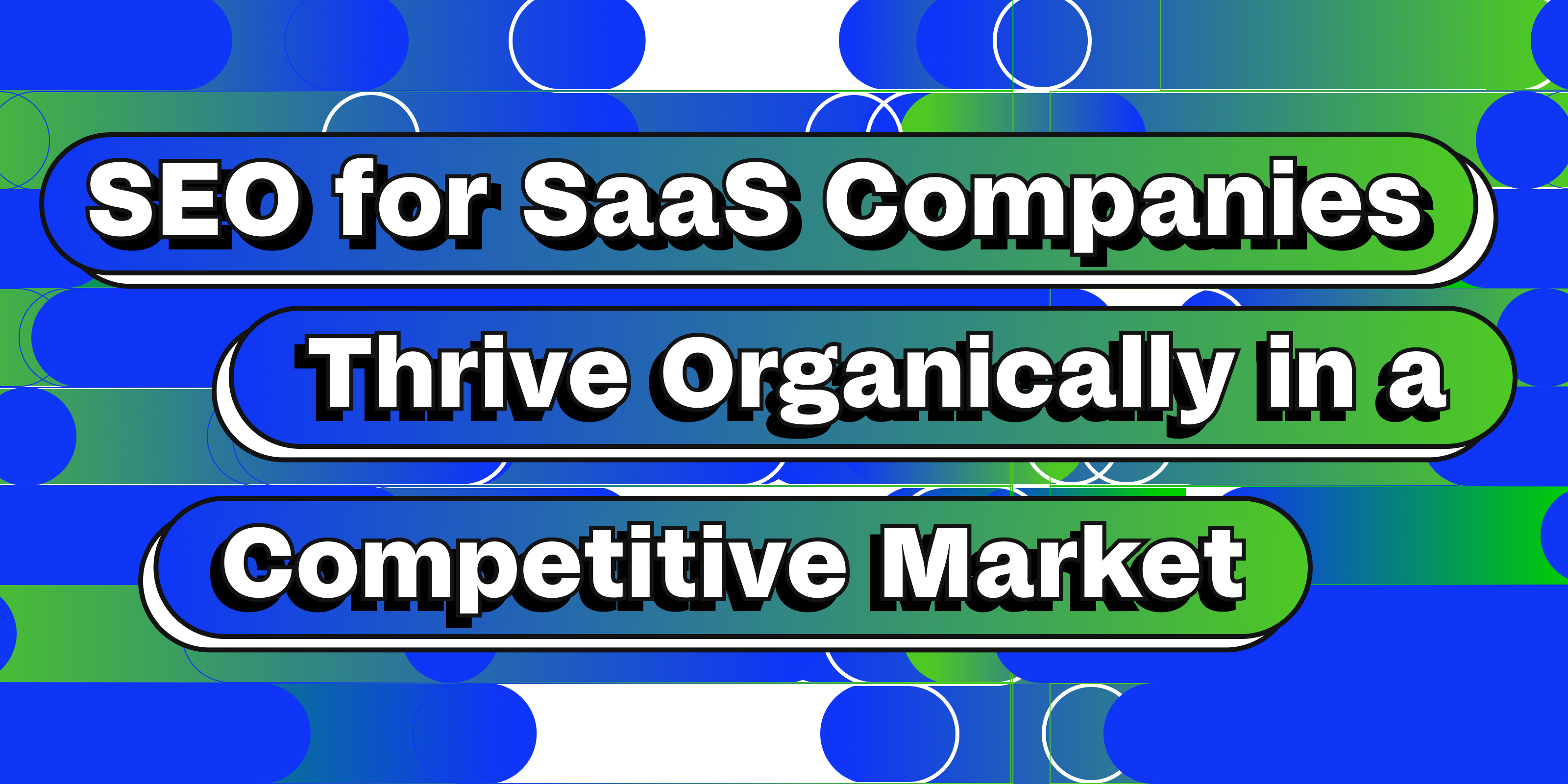

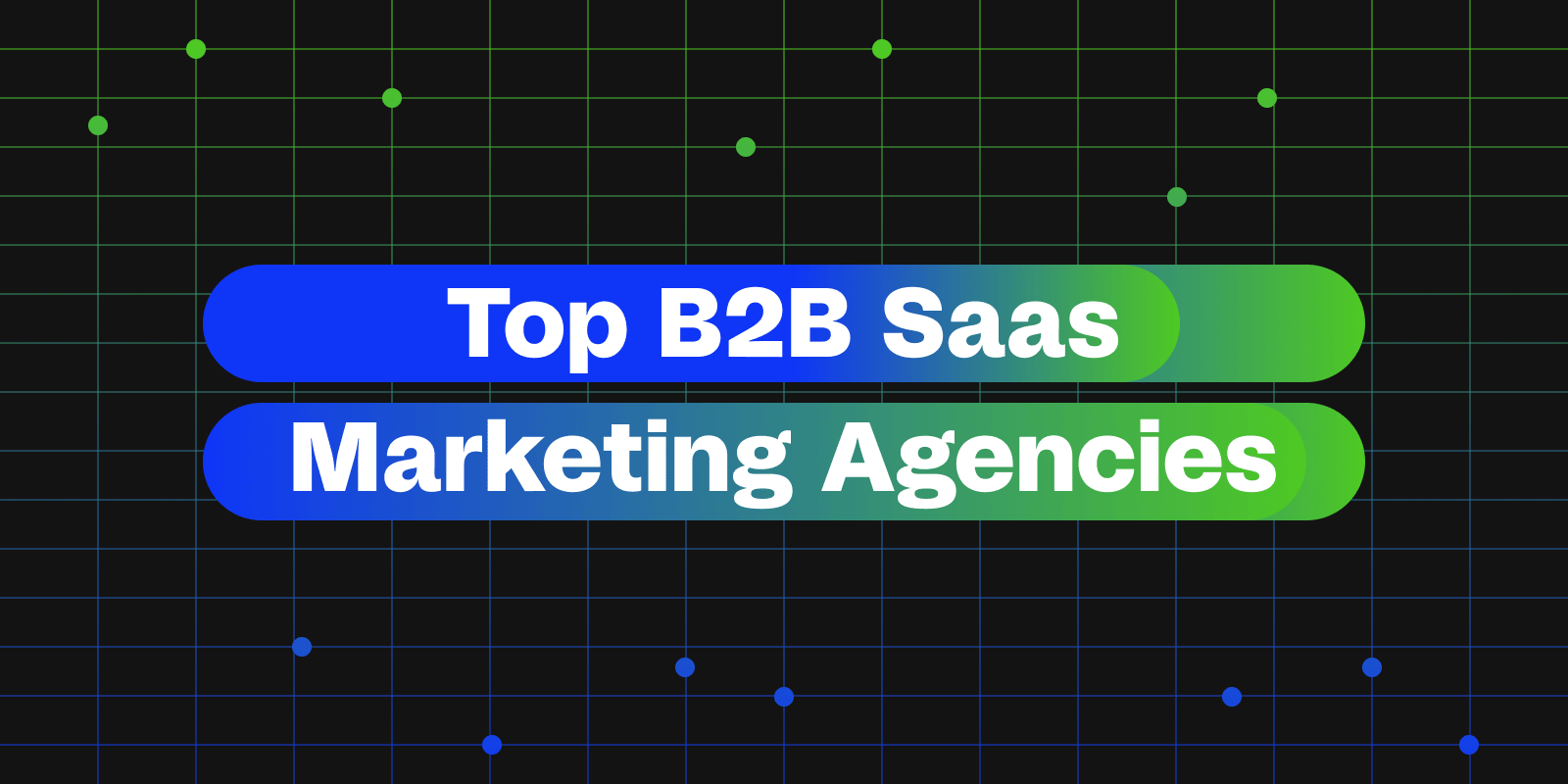

Hello, First of all, your information is very amazing and so much inspired by me. Keep it up and Thank you very much.:)